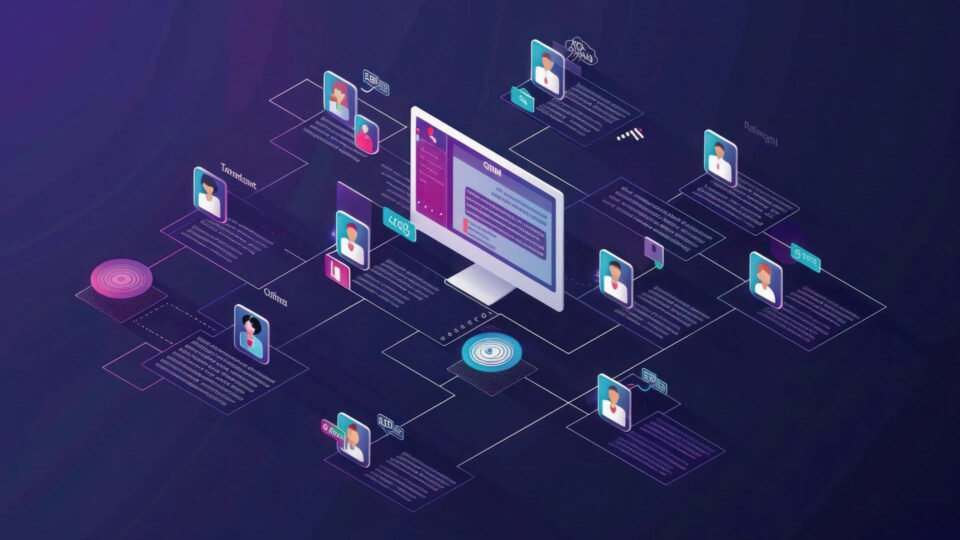Explore the innovative Data Lakehouse architecture that unifies data warehousing and data lakes, enhancing data management, analytics, and real-time processing.
Table of contents
Introduction
1. The Architecture of a Data Lakehouse
2. Use Cases and Applications of Data Lake House Architecture
Final thoughts
Introduction
In this digital world, data is an important asset; however, organizations are searching for storage solutions that will help them manage big data’s volume, latency, resiliency, and data access requirements. Traditionally, companies used existing tech stacks that delivered the same capabilities as a warehouse or lake but had adjustments in handling massive amounts of semi-structured data. These approaches often resulted in high costs and data duplication across all businesses.
The emergence of data lake houses as a hybrid data architecture aims to deliver better benefits as it eliminates data silos, anticipating unified and Hadoop-based storage for analytics that could consolidate data storage and analysis.
Therefore, for a better understanding of Data Lakehouse, AITech Park brings you this exclusive article where we will talk about the architecture of Data Lake House with a few case studies and application areas.
1. The Architecture of a Data Lakehouse
We are well aware that Data Lake House is a flexible storage with all the data management features that can handle massive amounts of data of various types, from structured to semi-structured and unstructured, while ensuring data governance, quality, and reliability. However, the data lake house is incomplete without discussing its architecture.
1.1. The Entry Point: Ingestion Layer
In the data lake house structure, the ingestion layer is considered the starting point where it collects and imports data from multiple sources, such as IoT devices, online activities, social networks, and many more. This handles both the batches and further processes through real-time streams, ensuring that data is accurately delivered and stored for further processing.
1.2. The Second Level: Storage Layer
The heart of the data lakehouse lies the “storage layer,” where the data is kept in a raw form. This layer is designed to stow the vast amounts of unstructured and structured data distributed on cloud storage solutions such as Amazon S3, Azure Data Lake Storage, or Google Cloud Storage.
1.3. The Third Level: Metadata Layer
The metadata layers act as a data lake house catalog that helps in managing information about data stored within the structure, format, and lineage. This layer supports data governance and access control, a unified view of data assets, making it easier for users to find the understandable information that they might need.
1.4. The Fourth Level: Processing Layer
This is where the data transformation takes place, as it involves cleaning, enriching, and transforming raw data into a more usable format for analysis. Utilizing processing engines such as Apache Spark or Databricks, this layer can handle both batch processing for large-scale data sets and real-time processing for essential insights.
1.5. The Fifth Level: Governance and Security Layer
To run the data lakehouse, data security, and governance are important to ensure data integrity, quality, and compliance with privacy regulations; they help in protecting against unauthorized access. This also encompasses policies and mechanisms that aid in data access, control, auditing, and ensuring that data usage is adhered to all organizational standards and legal processes.
1.6. The Sixth Level: Query and Serving Layer
This is the last level where all the queries and serving are conducted, enabling efficient retrieval and querying of data for SQL-like interfaces, APIs, or any specialized engines such as Apache Hive or Pesto. This layer is crucial for data scientists and analysts as it allows them to perform any sort of complex query and further store them within the lakehouse.
1.7. The Last Level: Analytics and Visualization Layer
Lastly, we have the analytics and visualization layer, where data is turned into real insights that can be further integrated with numerous analytical and business intelligence tools like Power BI, Tableau, or Looker. This is the key level where decision-makers come into the picture to make actionable and supporting decision-making that will aid the organization.
However, for a better understanding of the powers of Data Lakehouse, here are a few organizations that have transformed their industries’ operations and supplied a centralized storage system for their constantly generated data.
2. Use Cases and Applications of Data Lake House Architecture
Several companies have started adopting data lake house architecture to unlock the value of their data. Netflix, for example, uses Apache Iceberg, a data lakehouse provider with a new table format that solves problems related to large-scale analytics and provides seamless transactions without deterring the data.
Similarly, Notion scaled up its data infrastructure by creating an in-house lakehouse to manage rapid data development and meet product demands. Their data lake house architecture uses S3 for storage, Kafka and Debezium for data ingestion, and Apache Hudi for efficient data management, which saves up 35% of their expenses along with enhancing capacities for analytics and product development.
Even the tech giant Atlassian has adopted a data lake house architecture to facilitate data democratization at a large scale. By transitioning to a lakehouse, Atlassian decreased the unnecessary data storage, computing, and overhead expenses, enhanced data governance, and provided self-sufficiency for their data engineers and scientists to research and execute analyses that drive innovation.
Final thoughts
With time, the Data Lake House architecture has become more flexible and powerful as it enables companies to gain insights from large datasets and further efficiently manage data to make data-driven decisions faster. This transmission also introduces data observability that will play an important role in monitoring and maintaining the data quality of the datasets within the lakehouse.
Explore AITechPark for top AI, IoT, Cybersecurity advancements, And amplify your reach through guest posts and link collaboration.

